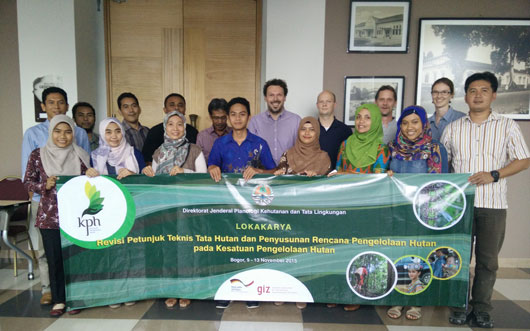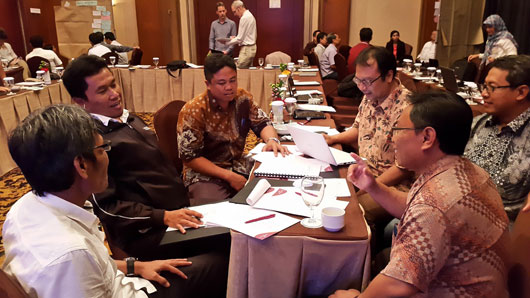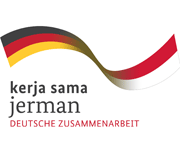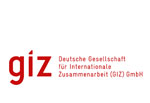FORCLIME
Forests and Climate Change ProgrammeTechnical Cooperation (TC Module)

Select your language

Background
Forest inventories serve the purpose of collecting forest data and other relevant information for management (here: Fforest Mmanagement Uunits - FMUs). They provide the basis for all further analyses and planning steps as defined in long-term as well as annual business and management plans.
The application of sound and efficient forest inventory methods at FMU level is a precondition for the formulation of 10-year as well as annual management plans of FMUs and therefore of central importance to the forest sector reform of the Indonesian Government. Specific inventories need to be conducted at regular intervals at FMU, resort (RPH) and compartment level to provide the basis for forest management by determining the potential of forest and non-timber forest products.
Current challenges for forest inventories at FMU level:
The existing inventory guideline as well as the general conditions for forest inventories cause various challenges and difficulties to the implementation of inventories at FMU level:
Methodology:
Capacities of stakeholders:
Mandates of stakeholders::
Scale and topography:
Land tenure and utilization rights:
FORCLIME supports the revision of the FMU forest management inventory guideline
Throughout the course of one year, FORCLIME has supported MoEF’s Directorate for Forest Resources Inventory and Monitoring (IPSDH) in the revision process of the existing technical guideline for FMU forest management inventories. In close collaboration with IPSDH and together with the ForestEye consultant team from the University of Goettingen, Germany, several Focus Group Discussions (FGD), workshops and trainings have been conducted:
March 2015: Preparatory meeting.. Assessment of the problems and challenges with the current technical inventory guideline, identification of key personnel within MoEF and set-up of a roadmap for the FORCLIME supported revision process.
April 2015: Focus Group Discussion. Presentation of results from the critical review of the current guideline by the consultants and preliminary recommendations on sampling design alternatives and options for the design of management inventories.
July 2015: Information and Training Needs Assessment. Assessment of the actual purpose of inventories on FMU level to identify information required to be collected during inventories. The link between inventory information and sustainable management plans was a critical issue. The expressed training needs were addressed through subsequent workshops and intensive training sessions in November.
November 2015: Workshop and training. FMU, BPKH and MoEF staff discussed possibilities to increase the cost-effectiveness of the inventory methodology as well as the clear formulation of the inventory purposes and objectives according to FMU needs. The one-day workshop was followed by a three-day training on Geographic Information Systems (GIS), data management, remote sensing and modern forest mensuration devices.
March 2016: Final workshop. A large group of forestry experts from MoEF, universities, FMUs, FAO and GIZ came together for a two-day workshop. Participants provided final inputs and discussed the minimum standard guideline for forest management inventories at FMU level compiled by FORCLIME and ForestEye Consultants.

Outlook
Ultimately, FORCLIME and the ForestEye consultant team from the University of Goettingen will finalize the minimum standard guideline for forest management inventories on FMU level which will include all results and inputs from the above-described workshop series. This document is FORCLIME’s contribution to the ongoing revision process of the MoEF IPSDH’s inventory guideline and will be available in English and Bahasa Indonesia. IPSDH plans completing the revision process by June 2016. The revised inventory guideline shall be implemented in 2017.
For further information please contact:
Tobias Goedde, Strategic Area Manager for Sustainable Forest Management (SFM)
 |
Supported By: |
  |